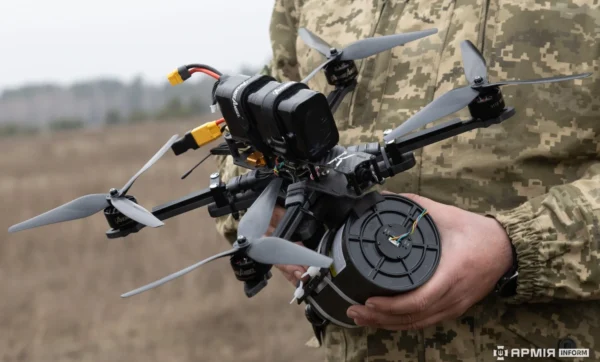NATO Seeks Solutions for Fiber-Optic FPV Drones

NATO’s Allied Transformation Command (Norfolk, Virginia) has announced its latest Innovation Challenge topic, which is focused on detecting, tracking and neutralizing fiber-optic first person view (FPV) drones.
During the first year of the Russo-Ukrainian War in 2022, both Russian and Ukrainian forces started utilizing RF-controlled FPV drones for precision delivery of munitions. This was particularly important for Ukrainian ground forces, which has maintained the ability to hold Russian targets at risk despite a chronic shortage of 155 mm artillery shells. FPV drones were initially countered via GNSS jamming from both Russian and Ukrainian forces. Eventually both armies introduced additional RF jamming modes that targeted the FPV drones’ command and control links.
In early 2024, Russian forces began to use fiber-optic controlled FPV drones to get around these modes of jamming. Ukraine forces quickly adopted the same technology. The operational range of most fiber-optic FPV drones is typically 20 km or less. However, the longest range is reportedly 41 km. Their operational range and resistance to RF jamming creates a significant precision strike problem for both sides in the war.
With this new Innovative Challenge topic, NATO is seeking solutions to help Ukrainian forces defeat the Russian fiber-optic FPV drones. According to at least one press report, Russia has been exploring countermeasures for fiber-optic FPV drones, as well.
On April 30, Allied Transformation Command issued a Request for Innovative Participation (RFIP-ACT-SACT-25-48) to identify and evaluate solutions to that can defeat fiber-optic FPV drones. In its description of fiber-optic FPV drones, the solicitation states, “EW counter-UAS systems are ineffective against this type of drone. The combination of high maneuverability, jamming immunity, and low visual and radar signature makes these drones particularly dangerous to frontline troops and forward elements.”
The RFIP asks for industry and academia to propose solutions that address one or more of the following mission-critical phases:
-
- Detection & Prioritization (Field of View 360° Azimuth x 80° Elevation (preferable 100° or above) scanning using radar, optical, acoustic, thermal, or hybrid sensors)
- Guidance & Tracking (target speed, distance, trajectory calculation)
- Neutralization (kinetic and non-kinetic defeat systems)
Based on operational input (presumably from Ukrainian Unmanned Systems Forces), the RFIP states that performance parameters should aim to meet the following criteria:
Detection
- Target Speed: from 1 m/sec (hovering) up to 100 m/sec;
- Detection Range: from 300 (threshold) up to 500 (objective) meters in open terrain for 7-10 inch fpv drone with weight 3-4 kg;
- Typical target Size: detection of drones as small as 300×300×100 mm;
- Should operate under night conditions and adverse weather (fog, rain, etc.)
Engagement
- Firing Radius: not closer than 50 meters;
- Precision Fire Control: automated targeting (aiming, ballistics and leading offset calculation, wind correction etc.) with real-time data feed;
- Multi-shot capability: highly preferred;
- Countermeasures may include (but not limited by) either kinetic means (shotgun arrays, fragmentation munitions, machineguns with high fire rate, etc.); directed energy (electromagnetic pulses, microwave or laser); or other non-kinetic means (net launchers, gas/aerosol, etc.)
In terms of desired system characteristics, the RFIP suggests that the preferable system weight (including platform) is less than 100 kg in a tripod or vehicle-mounted configuration and the price per unit is EUR€50,000-€100,000.
The objective of the RFIP is for “discovery only,” and it does not include any procurement provisions. Concept papers are due by May 30. Up to 10 proposals will be selected for a “Pitch Day” in Tallinn, Estonia on June 20. A potential prototype and maturation phase would take place from July-October. The technical point of contact is LCDR Pierre Delom, +1 (757) 747- 3840, e-mail [email protected]. The contracting point of contact is Ms. Catherine Giglio, +1 (757) 747- 3856, e-mail [email protected]. The RFIP is available here. – J. Knowles






